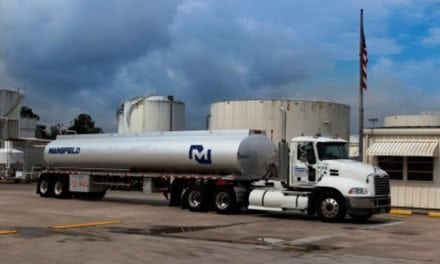Release Date: Nov. 9, 2021
Global liquid fuels
- The November Short-Term Energy Outlook (STEO) remains subject to heightened levels of uncertainty related to the ongoing recovery from the COVID-19 pandemic. U.S. gross domestic product (GDP) declined by 3.4% in 2020 from 2019 levels. This STEO assumes U.S. GDP will grow by 5.4% in 2021 and by 4.2% in 2022. The U.S. macroeconomic assumptions in this outlook are based on forecasts by IHS Markit. In addition to uncertainty about macroeconomic conditions, the evolving effects of consumer behavior on energy demand because of the pandemic present a wide range of potential outcomes for energy consumption. Supply uncertainty in the forecast results from the production decisions of OPEC+ along with the rate at which U.S. oil and natural gas producers increase drilling at forecast price levels.
- Brent crude oil spot prices averaged $84 per barrel (b) in October, up $9/b from September and up $43/b from October 2020. Crude oil prices have risen over the past year as result of steady draws on global oil inventories, which averaged 1.9 million barrels per day (b/d) during the first three quarters of 2021. In addition to sustained inventory draws, prices increased after OPEC+ announced in early October—and reaffirmed on November 4—that the group would keep current production targets unchanged. We expect Brent prices will remain near current levels for the rest of 2021, averaging $82/b in the fourth quarter of 2021. In 2022, we expect that growth in production from OPEC+, U.S. tight oil, and other non-OPEC countries will outpace slowing growth in global oil consumption and contribute to Brent prices declining from current levels to an annual average of $72/b.

- We estimate that 98.9 million b/d of petroleum and liquid fuels was consumed globally in October, an increase of 4.5 million b/d from October 2020 but 1.9 million b/d less than in October 2019. We revised up our forecast for consumption of petroleum and liquid fuels for the fourth quarter of 2021, partially as a result of fuel switching from natural gas to petroleum in the electric power sector in parts of Asia and Europe. This fuel switching is a result of increases in natural gas prices in Asia and Europe. We forecast that global consumption of petroleum and liquid fuels will average 97.5 million b/d for all of 2021, which is a 5.1 million b/d increase from 2020. We forecast that global consumption of petroleum and liquid fuels will increase by 3.3 million b/d in 2022.
- U.S. regular gasoline retail prices averaged $3.29 per gallon (gal) in October, up 12 cents/gal from September, and $1.13/gal higher than in October 2020. The October price was the highest monthly average since September 2014. We forecast that retail gasoline prices will average $3.32/gal in November before falling to $3.16/gal in December, which are 16 cents/gal and 11 cents/gal higher than our previous forecast, respectively.
- U.S. crude oil production averaged an estimated 11.4 million b/d in October, up from 10.7 million b/d in September as a result of production increases following disruptions from Hurricane Ida. We forecast production will rise to 11.6 million b/d in December. We forecast annual production will average 11.1 million b/d in 2021, increasing to 11.9 million b/d in 2022 as tight oil production rises in the United States. Growth will come largely as a result of onshore operators increasing rig counts, which we expect will offset production decline rates.
Natural Gas
- In October, the natural gas spot price at Henry Hub averaged $5.51 per million British thermal units (MMBtu), which was up from the September average of $5.16/MMBtu and up from an average of $3.25/MMBtu in the first half of 2021. The rising natural gas prices in recent months reflect U.S. natural gas inventory levels that are below the five-year (2016–20) average. Despite high prices demand for natural gas for electric power generation has remained relatively high, which along with strong global demand for U.S. liquefied natural gas (LNG) has limited downward natural gas price pressures.
- The Henry Hub spot price will average $5.53/MMBtu from November through February in our forecast and then generally decline through 2022, averaging $3.93/MMBtu for the year amid rising U.S. natural gas production and slowing growth in LNG exports. We forecast that U.S. inventory draws will be similar to the five-year average this winter, and we expect that factor, along with rising U.S. natural gas exports and relatively flat production through March, will keep U.S. natural gas prices near recent levels before downward price pressures emerge. Because of uncertainty around seasonal demand, we expect natural gas prices to remain volatile over the coming months with winter temperatures to be a key driver of demand and prices.
- We estimate that U.S. LNG exports averaged 9.8 billion cubic feet per day (Bcf/d) in October 2021, up 0.3 Bcf/d from September, supported by large prices differences between Henry Hub prices in the United States and spot prices in Europe and Asia. LNG exports resumed from Cove Point LNG in late October after that facility’s annual maintenance was completed. In our forecast LNG exports average 9.8 Bcf/d for all of 2021, up 50% from 2020. We expect that LNG exports will increase this winter, averaging 11.0 Bcf/d from November through March. We expect high levels of LNG exports to continue into 2022, averaging 11.5 Bcf/d for the year, up 17% from 2021. The forecast reflects our assumption that global natural gas demand remains high and several new natural liquefaction trains—the sixth train at Sabine Pass LNG and the first trains at the new LNG export facility, Calcasieu Pass LNG—enter service.
- U.S. natural gas inventories ended October 2021 at more than 3.6 trillion cubic feet (Tcf), 3% less than the five-year average for this time of year. Injections into storage this summer were below the previous five-year average, largely as a result of more electricity consumption in June because of hot weather and increased exports, even as domestic natural gas production has remained flat. However, in recent weeks, storage levels have moved closer to average levels as injections outpaced the five-year average in September and October. We expect natural gas inventories to fall by 2.1 Tcf this winter, ending March at 1.6 Tcf, which would be 4% less than the 2017–21 average for that time of year.
- We estimate dry natural gas production averaged 94.9 Bcf/d in the United States in October (up from 94.5 Bcf/d in September) and 91.9 Bcf/d in in the first half of 2021. Production in the forecast rises to an average of 95.2 Bcf/d during the rest of this winter (November–March) and averages 96.7 Bcf/d during 2022, driven by natural gas and crude oil prices, which we expect to remain at levels that will support enough drilling to sustain production growth.











